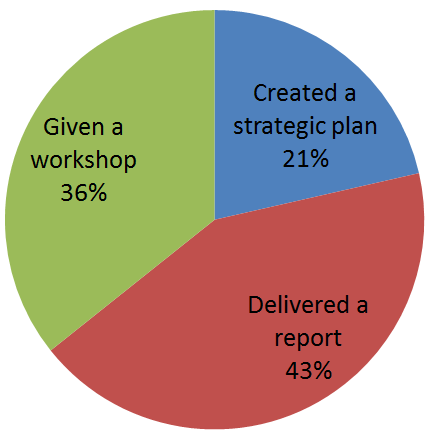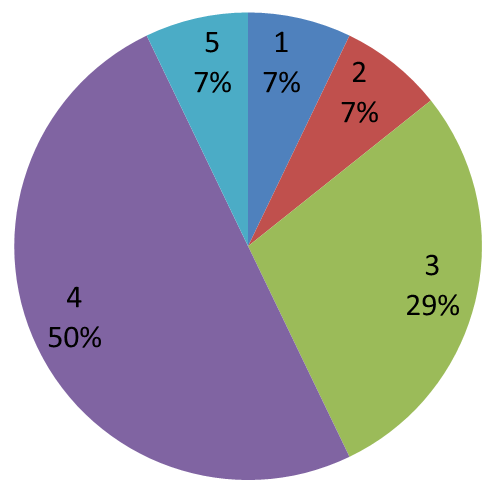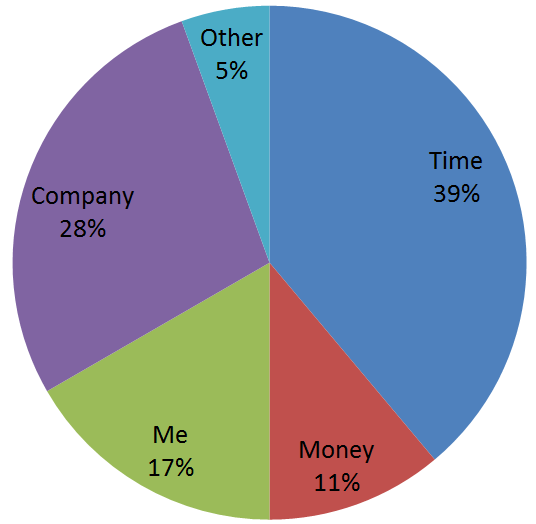I recently listened to a great interview with Dan Hardy and Sean Stephenson, author ofGet Off Your But. This guy has an amazing story. He’s all of 3 feet tall, wheelchair bound – and has become a YouTube sensation as a motivational speaker.
Sean says that his life’s mission is to rid the world of insecurity. I love it!
His interview got me thinking about where I might have insecurities and need to get off my “but!” Where do you feel insecure? Where haven’t you taken your career to where you had hoped it would go? What is the “but” that’s stopping you?
The logical response often has to do with a lack of time. Most people I’ve coached do a poor job of managing their time. In The Effective Executive, management guru Peter Drucker says that time management was the first item he discussed with executives throughout his illustrious career. Is one of your career goals to master the concept of time management? If not, why not? HR That Works Members should take advantage of the Time Management training module.
Often, our greatest “buts” have nothing to do with logic – or we would be accomplishing our goals. Most of our “buts” are emotionally driven nonsense. One of the greatest insights in this area is this: if it doesn’t make sense, don’t try to make sense out of it! For example, if you want to become a more strategic executive, why haven’t you? If time is an issue, why haven’t you mastered time management? Why haven’t you improved your ability to communicate your desires to upper management or your clients? As Sean mentioned in his interview, the worst that could happen is to fail. He said that he’d much rather see his clients fail than sit on the couch. I can tell you that my greatest successes grew out of my greatest failures – resulting either from stupidity or from going for it. This might well be the case for you, as well.
We can tackle these emotional challenges by using three magic words: coax, encourage, and inspire.
When you coax yourself, you take the first safest step. It’s our most natural way of moving forward. Success can only come one step at a time, anyway. If you want to improve your heath, you can put together a six-month total exercise and nutrition plan – but you’ll still have to implement it one step at a time. So, although it might be wonderful to see the “end in mind,” we have to start at the beginning. For example, I might propose to my clients that we do a “drive-by”. Let’s put on our sneakers and drive by the gym! Try that and see how it feels. I’m trying to get past any emotional blockages, and, if it doesn’t feel good, it gives you an emotional “out.” One of my favorite coaxing mechanisms is education. It usually feels pretty safe to learn something. After going through a financial debacle many years ago, I bought every book I could find with the word “millionaire” in the title. This was a safe first step that gave me the confidence to take action.
The second step is to encourage yourself. We do this by feeling good about ourselves and moving that energy to where we need it. This means you have to spend the time finding the good in you. For example, after I was bummed out about hitting the financial floor, my good friend, Loy Young, helped me find the good in myself and move it to where I needed it. She asked me what it took to be the good trial lawyer that I was. I told her it took me three years of study, followed by three years of practice, to get really good. She said it would likely take me three years of study and three years of practice to get really good about managing my money too. She was right!
Where have you done good things in which you can take pride? Maybe it’s how you raised your kids or coached their team, or ran a project, or helped a client. Why were you able to do this? How did it make you feel? What actions did you take? If you take the same energy and bring it over to where you need it, you will become a master of self-encouragement.
Encouragement involves continually finding things for which you’re grateful. Experience tells me that you can never run out of these things.
Finally, we want to inspire a new story. Our stories have been gifts to us from the outside; be it from our parents, siblings, teachers, friends, social networks, TV, or other sources. If we want different results, we have to give ourselves a different story. I had to get myself a different story about money that finally gave me the ability to keep any of it! If you want different results about your money, career, health, relationships, or spirituality, you’ll need a different story about these things.
The stories we tell ourselves will come to fruition – just never when or how we expect it. Unless you have the right story, you’ll produce a life of regret. Don’t do this; tell yourself a great story!
I hear far too many “buts.” There’s a great deal of blame and justification and not enough taking responsibility. Play the responsibility game: coax, encourage and inspire yourself to get off your “but” – and live a life for which you can truly be grateful!

 Nobody knows that you’re doing a great job unless you tell them. It’s not that they don’t care about you; it’s just that they’re running 75mph and barely have time to pay attention to anything but their own work. What effort have you made to get noticed by delivering a report or giving a workshop? Unfortunately, only 21% of respondents said that they created a strategic plan. As Mary Kay once stated, “most people spend more time planning their vacations better than their career.” Or, as I might add, their HR department.
Nobody knows that you’re doing a great job unless you tell them. It’s not that they don’t care about you; it’s just that they’re running 75mph and barely have time to pay attention to anything but their own work. What effort have you made to get noticed by delivering a report or giving a workshop? Unfortunately, only 21% of respondents said that they created a strategic plan. As Mary Kay once stated, “most people spend more time planning their vacations better than their career.” Or, as I might add, their HR department. Half of the respondents described themselves as fairly “excited.” Unfortunately, some 43% were just “ok or worse” with HR. Most organizations find the whole idea of HR boring. My guess is that is not the case at the 7% of companies where people said they were very excited about HR! I believe that if 7% can be excited, so can the 93%. It’s simply a choice. What have you done in HR lately that goes beyond administrative or compliance requirements? What have you done to help improve the quality of the workplace (getting rid of poor employees and replacing them with great ones is a start), increasing performance management (having a performance management system that actually works), boosting retention, and giving greater love to that 20% of your workforce that produces 80% of results? What are you helping your company do to become more creative, innovative, and interesting?
Half of the respondents described themselves as fairly “excited.” Unfortunately, some 43% were just “ok or worse” with HR. Most organizations find the whole idea of HR boring. My guess is that is not the case at the 7% of companies where people said they were very excited about HR! I believe that if 7% can be excited, so can the 93%. It’s simply a choice. What have you done in HR lately that goes beyond administrative or compliance requirements? What have you done to help improve the quality of the workplace (getting rid of poor employees and replacing them with great ones is a start), increasing performance management (having a performance management system that actually works), boosting retention, and giving greater love to that 20% of your workforce that produces 80% of results? What are you helping your company do to become more creative, innovative, and interesting? I often ask this question in workshops and in webinars. Time is always the most common response (one of those buts again), followed by the company or management. A survey of HR That Works members found that 84% of respondents said they would make better use of the service if they had more time.
I often ask this question in workshops and in webinars. Time is always the most common response (one of those buts again), followed by the company or management. A survey of HR That Works members found that 84% of respondents said they would make better use of the service if they had more time.



